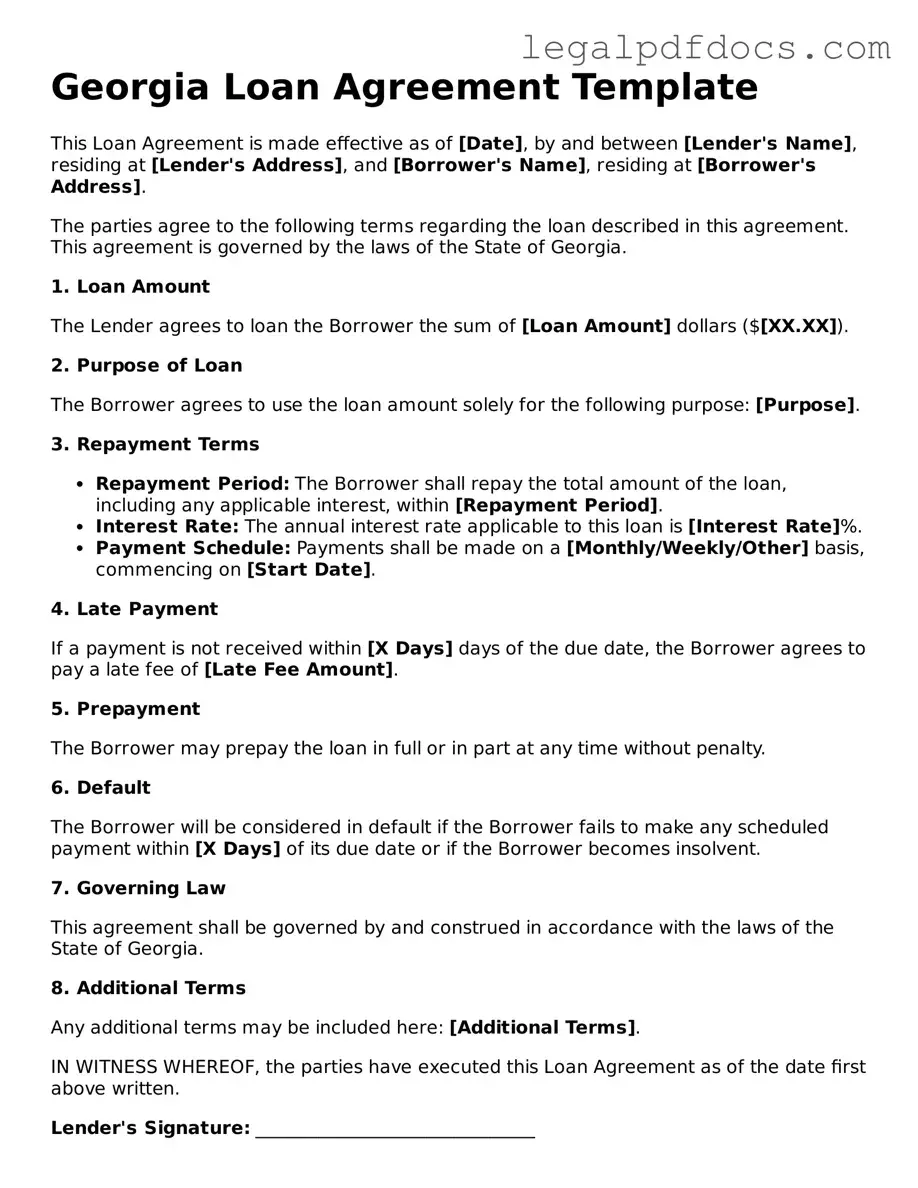The Georgia Loan Agreement form serves as a vital document in the realm of personal and commercial financing, outlining the terms and conditions under which a borrower receives funds from a lender. This form typically includes essential elements such as the loan amount, interest rate, repayment schedule, and any applicable fees. Both parties must agree on these terms, ensuring clarity and mutual understanding. Additionally, the document may specify collateral requirements, which provide security for the lender in case of default. Provisions regarding late payments and default consequences are often included, safeguarding the lender's interests while also informing the borrower of their obligations. Furthermore, the form may address the legal rights of both parties, including dispute resolution mechanisms, which can be crucial in maintaining a professional relationship throughout the loan's duration. Overall, the Georgia Loan Agreement form is designed to protect both the lender and the borrower, fostering transparency and accountability in financial transactions.
